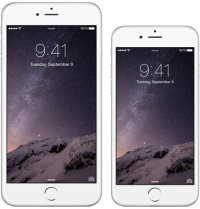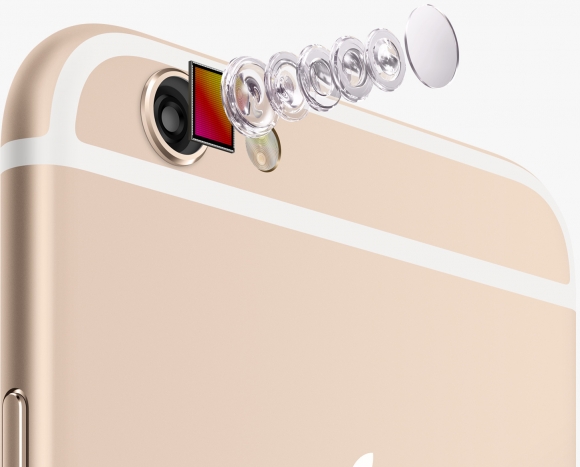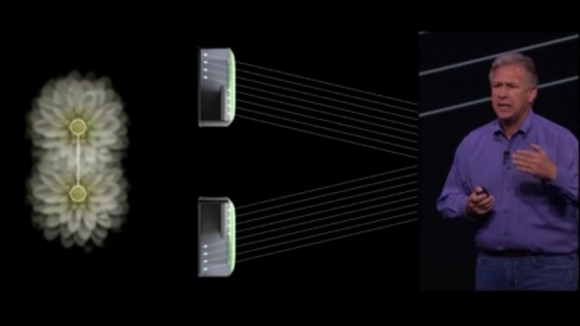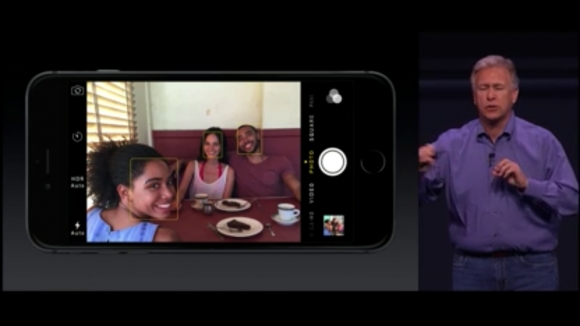Apple’s iPhone 6 and 6 Plus are bigger, promise improved cameras including on-chip phase-detect autofocus
posted Tuesday, September 9, 2014 at 3:46 PM EDT

Apple has just unveiled the latest generation of the iPhone, and the devices now comes in two sizes, just as the rumors predicted. The new iPhone 6 sports a 4.7-inch display, while its bigger sibling, the aptly named iPhone 6 Plus, reaches out into phablet territory with a 5.5-inch screen -- both of which are now called Retina HD.
As was to be expected, the resolution has grown together with the screen size, with the 4.7-inch iPhone 6 now sporting 1334x750 pixels. The larger iPhone 6 Plus, on the other hand, has finally made the step to a Full HD screen, sporting 1920x1080 pixels on its 5.5-inch display. The higher pixel count and density on both phones of course means a more detailed preview of photos, but also more details in other apps.
On the inside of the new iPhone 6 and 6 Plus, the new 64-bit A8 processor is responsible for smooth performance, which Apple claims is 25% faster and 50% more effective than the previous A7 processors. This should also help with all kind photography functions that require a lot of processing power, and in fact, Apple specifically mentioned that the new A8 chip has dedicated algorithms specifically for image processing.

But now to the one aspect of the new iPhones that interests us here at Imaging Resource the most: the camera. Unsurprisingly, Apple has decided to -- once again -- stick with an 8 megapixel resolution. In terms of the overall benefits to image quality this seems like a good choice. If you absolutely need more megapixels, though, the iPhone 6 and 6 Plus come with a panorama mode that lets you take pictures with a 43 megapixel resolution.
But of coruse, the new iPhones wouldn't be new iPhones if there weren't some relevant changes to the camera as well. One of the most significant changes of the new sensor is the addition of phase detection pixels -- aptly dubbed "Focus Pixels" -- much in the same way as we've seen it in many compact, mirrorless and DSLR cameras recently, such as the Canon 70D and Fujifilm X-T1. This promises much more accurate and faster autofocusing as compared to previous iPhone models.

Another pretty significant change is that Apple has included optical image stabilization into the iPhone 6 Plus's camera, which makes it stand out from the smartphone crowd. This should make the phone's camera even more useful in low light situations where the only way around a noisy image is a longer shutter speed. The "regular" iPhone 6, unfortunately, has to make do with standard digital IS.
Other new camera features on the iPhone 6 and 6 Plus include 240 fps slow motion video recording, a "Burst Selfie" mode of which we're not yet entirely sure what it does, improved face detection and a new one-shot HDR mode. As for the technical details of the latter, Apple hasn't shared any information yet.


So while the photographic capabilities of the new iPhones are by far no revolutions -- which, to be honest, we didn't expect -- the changes that Apple has made are quite significant, the most exciting of which being the phase detection AF and the optical image stabilization in the iPhone 6 Plus. These and the other new features will surely provide an improved photographic experience over the iPhone 5S.
The iPhone 6 and 6 Plus are scheduled to be available in mid-September 2014, with prices starting at $199 for the 16 GB iPhone 6 -- 2-yr. contract included, of course. The 64 GB iPhone 6 will set you back $299, while the 128 GB model can be had for $399. If you're in for the larger iPhone 6 Plus, add $100 on top of these prices.